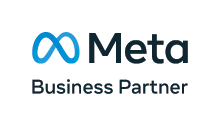As a business leader, you know the importance of online marketing in growing your profits and revenue. Pay-per-click (PPC) campaigns are a powerful tool in your arsenal, and Google Ads is the undisputed king of PPC. By leveraging Google’s reach and directing highly-targeted traffic to your website, you can turn clicks into customers and profits.
However, before jumping into the world of PPC, it’s crucial to keep five key strategies in mind. These proven techniques can help you get the most out of your investment and maximise your return on investment. Whether you’re a seasoned pro or a newbie, don’t miss out on these essential tips for running successful PPC campaigns.
1. Keyword Strategy
The first and most crucial strategy is keyword selection. Choosing the right keywords is essential to attract the right audience and ensure maximum website traffic. Organic search data is a good starting point. If you work with a B2B SEO agency or manage SEO in-house, chances are you get a lot of organic search traffic from a wide variety of keywords. Data from Google Search Console and Analytics can be a good starting point to identify keywords. But this data should not be used without context.
For example, if you sell premium desks for executives, targeting generic keywords like “desks” or “office tables” may not yield the desired results. Instead, focus on long-tail keywords like “oak executive desk” or “limited edition wooden desks”. These targeted keywords will not only attract the right audience but also help to reduce your cost-per-click (CPC).
In B2B, using keyword match types is critical to ensure the right audience sees your ads. For instance, using phrase match keywords like “employee benefits providers” or “vendor management solutions” will help you reach customers who are specifically searching for those terms. Including negative keywords like “jobs,” “free,” or “DIY” is also important to filter out irrelevant clicks – unless you’re recruiting or offering free trials – and ensure your campaign reaches the intended audience.
To illustrate the importance of keyword strategy, imagine a company that sells eco-friendly cleaning products. If their PPC campaign targets generic keywords like “cleaning supplies,” they may attract individuals who are looking for cheap cleaning products or DIY cleaning solutions for their home.
However, if they focus on long-tail keywords like “non-toxic cleaning supplies” or “eco-friendly cleaning products,” they will attract customers who are specifically looking for those products and are more likely to make a purchase.
» Key Takeaway
Keywords are the foundation of your PPC campaign – choose wisely for maximum results!
2. Structure Strategy
To run a successful PPC campaign, businesses must pay attention to its structure, keeping the customer in mind. A well-structured campaign can effectively communicate the message to the target audience, taking them from brand awareness to purchase consideration.
To achieve this, businesses should organise campaign structure in a way that aligns with the customer’s journey.
For instance, a business selling high-end executive desks might create a campaign structure that includes different ad groups focused on brand keywords, product keywords, and competitor keywords. By doing so, the business can target customers at different stages of the sales funnel and provide them with relevant information.
Campaign structures must also be flexible and adaptable to changes in website traffic and business performance. For example, if a business is running a promotion for a particular product, they may want to create a separate ad group for that product to track its performance separately.
Lastly, businesses should note that the ROI of a campaign is directly related to its position in the sales funnel. For instance, a business might find that their brand awareness campaigns have a lower ROI than their product-focused campaigns. By analysing their campaign data, they can adjust their bidding strategies and budgets to maximise their ROI on a more granular level.
» Key Takeaway
Your PPC campaign structure is like a house – build it with care, maintain it regularly, and watch the money roll in like a landlord collecting rent.
3. Copy Strategy
For businesses looking to succeed in B2B marketing, building strong relationships and understanding the audience’s needs are critical. To attract the right audience, it’s essential to create copy that speaks directly to them. This means understanding their location, pain points, and objectives.
Unlike B2C campaigns, where the emphasis is on immediate purchases, B2B campaigns require a more measured approach. A call-to-action (CTA) that invites potential clients to “learn more,” “find out more,” or “contact us” is often more effective than a direct “buy now” message. The goal is to provide valuable information that builds trust and encourages engagement.
To differentiate from competitors, businesses should provide detailed and specific information about their offerings. A pricing list can be useful to help potential customers determine whether the product or service aligns with their budget. Additionally, highlighting any awards or top-rated status can increase site visits and attract potential customers.
Ultimately, the copy of a PPC campaign is where businesses can persuade their audience to click on the link and consider investing in their offerings. By creating copy that is tailored to the target audience and provides helpful information, businesses can build long-lasting relationships that lead to increased revenue and growth.
» Key Takeaway
Write copy that wows your audience without the hard sell, and watch your PPC campaign convert like magic.
4. Audience Strategy
To create successful targeted campaigns, businesses must develop a deep understanding of their customers. One effective way to achieve this is by building customer personas and conducting thorough research to gain insights into their audience. This knowledge is crucial for creating effective campaign content that guides potential customers from initial click to final purchase.
By understanding the audience’s interests, pain points, and motivations, businesses can tailor their messaging and content to resonate with them, increase website traffic, and boost sales. Additionally, identifying and targeting specific customer segments can help businesses maximise their return on investment (ROI) and achieve their marketing goals.
The ultimate goal of audience research is to create marketing content that truly speaks to people and encourages them to learn more about the business and its offerings. With a solid audience strategy in place, businesses can increase conversions and grow their bottom line.
» Key Takeaway
Know thy audience, know thyself.
5. Measurement Strategy
When it comes to B2B marketing, measuring success can be tricky due to longer sales cycles. Relying solely on direct response metrics can lead to over-optimization and poor marketing decisions. To effectively measure success, businesses need to identify the right metrics and constantly test and adjust their approach.
Measuring and testing are crucial in any industry, as they provide valuable data that can be used to optimise efficiency and improve marketing strategies. Proper measurement protocols can help businesses understand which campaigns are most effective and adjust their approach accordingly.
» Key Takeaway
Don’t run a marketing marathon blindfolded! Measure your way to success with the right metrics. Test, measure, repeat… it’s the B2B recipe for winning!
Additional Strategies to Boost PPC ROI
Apart from the key strategies mentioned above, there are additional tactics businesses can use to boost their ROI through PPC campaigns.
Acronyms: Using industry-specific acronyms can lead to higher search volumes and less competition, resulting in lower cost-per-click (CPC) and a better ROI.
Email Marketing: PPC campaigns can generate potential customers who may require more communication than those who found the business organically. Automated email marketing workflows and newsletters can be sent to subscribers based on their interests, needs, and the reason they visited the website.
Remarketing: Remarketing targets customers who have already visited the website or shown interest in the goods and/or services on offer. Since they are already familiar with the business, a targeted remarketing campaign can result in higher ROAS (return on ad spend) than attracting new cold prospects.
Looking for a winning B2B marketing strategy? Learn how to combine SEO and PPC for a knockout campaign.
Final Words
Implementing effective PPC strategies is crucial for the success of a B2B marketing campaign. With the constantly evolving online world, it’s important for businesses to be aware of the benefits of PPC campaigns and how to optimise them for their specific needs.
By utilising tactics such as audience research, copywriting, and measurement, businesses can create a well-structured campaign that effectively communicates their message to their target audience, increases website traffic, and drives conversions.
Additionally, incorporating nuances such as acronyms, email marketing, and remarketing can further boost ROI. Overall, understanding the best practices and strategies for PPC campaigns can make a significant difference in the success of a business’s marketing efforts.
Explore our B2B marketing services
About the Author
Rick has over two decades of experience with brands like Glasses Direct and Wellesley Group, helping businesses grow with bespoke digital solutions in marketing, SEO, web development, and strategy.

















